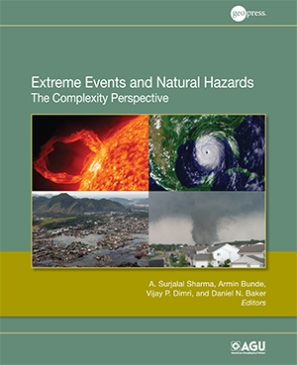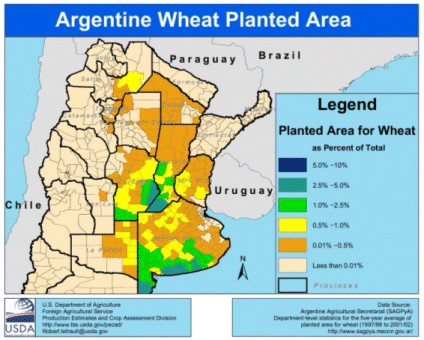There is a very informative new book that has appeared. It is
Institutions and Incentives in Regulatory Science (Edited by Jason Scott Johnston, 2012).
Available at http://www.amazon.com/Institutions-Incentives-Regulatory-Science-Johnston/dp/0739169467, as well as other online sites.
The book summary reads [highlight added]
From endangered species protection to greenhouse gas regulations, modern regulatory interventions are justified by science. Indeed, legislators look to science for simple answers to complex regulatory questions. This regulatory demand for scientific answers collides with the scientific reality that on the frontiers of science, there are no simple answers, only competing hypotheses and accumulating but as yet often inconclusive evidence. Given inevitable scientific uncertainty, regulatory agencies such as the U.S. Environmental Protection Agency are put in the position of adjudicating unresolved scientific controversies. As the contributions to this volume show conclusively and in great detail, such agencies (and other assessment organizations such as the Intergovernmental Panel on Climate Change or IPCC) are far from unbiased in how they assess regulatory science. They instead act as advocates for those scientific positions that further the regulatory agenda of promulgating new regulations and increasing the scope of the regulatory state.
The book describes many facts about how regulatory agencies use science to justify their regulations that may surprise and even shock many readers:
- In the area of climate science, where the IPCC is advertised as an objective and unbiased assessment body, the facts are that the Lead Authors for IPCC Assessment Reports are chosen by political representatives on the IPCC, and have no duty to respond in any way to the comments of outside reviewers of IPCC draft chapters. The oft-repeated claim that there are “thousands” of scientists involved in outside review of IPCC Assessment Reports is patently false, with generally only a few dozen truly independent outside reviews submitted even on key chapters. Perhaps most strikingly, the Editors with responsibility for overseeing the decisions of chapter Authors are themselves chosen by the same people (Working Group Chairs) who pick the Authors. An outside audit of the IPCC commissioned by the IPCC itself (done by the Interacademy Council) concluded that some body other than the IPCC should choose the Review Editors but acknowledged that there is no such outside body.
- Perhaps more than any other U.S. environmental law, the Endangered Species Act looks to science for clear answers regarding which species are imperiled and how to protect them. But as this book shows, for even the most basic threshold question – as to whether a population constitutes a species or sub-species – there is no scientific answer. As for the definition of a species, there are over a dozen competing definitions, and the categorization of a sub-species is even more problematic, with a plethora of approaches that have allowed the United States Fish and Wildlife Service (USFWS) and its biological advisers in the U.S Geological Service (USGS) to effectively declare sub-species at will, as even slight morphological or genetic differences are seized upon to indicate reproductive isolation and the propriety of categorizing a population as a sub-species. Even more seriously, the book recounts how USFWS peer review in cases of controversial taxonomic classification has involved the selective disclosure of underlying data to outside peer reviewers and has been actively controlled by USGS scientists with a strong self-interest in USFWS determinations. The book’s ESA chapters clearly show how supposedly scientific disagreement about whether a population is or is not a legally protected sub-species in fact reflect differing policy preferences, different weights that scientists attach to potential errors in triggering, or failing to trigger, legal protection.
- Perhaps the most dramatic case studies in the book come from the area of chemical toxicity assessment by the U.S. E.P.A. and National Institute for Environmental Health (NIEH). The book shows how the EPA has made determinations of chemical toxicity that deliberately ignore the most recent and most methodologically sound studies when those studies fail to support the agency’s preferred, pro-regulatory result of significant health risk at low doses. The case studies here include formaldehyde, where the National Academy of Science (NAS) itself concluded that EPA’s risk assessment “was based on a subjective view of the overall data” and failed to provide a plausible method by which exposures could cause cancer, a failure especially problematic given “inconsistencies in the epidemiological data, the weak animal data, and the lack of mechanistic data.” Equally dramatic is the story of EPA risk assessment for dioxin. Here, the agency continues to apply its decades-old assumptions that cancer risks at low doses can be extrapolated linearly from those actually observed in animal studies at high doses, and that there is no threshold level of exposure below which excess risk falls to zero. EPA continues to maintain these assumptions despite the NAS’s admonition that “EPA’s decision to rely solely on a default linear model lacked adequate scientific support.” Perhaps most disturbingly, the book provides examples of how supposedly unbiased outside scientific advisory panels are tainted by conflicts of interest. In the case of bisphenol A, for example, the NIEHS awarded $30 million in grants to study that chemical to scientists who had already publicly stated that the chemical’s toxicity was already well-researched and reasonably certain.
All told, the institutional details and facts provided by the authors’ of Institutions and Incentives in Regulatory Science paint a picture of a serious crisis in the scientific foundations of the modern regulatory state. But the authors go beyond this, by providing suggestions for reform. These proposals span a wide range. In climate science, author proposals range from calling for a much more open and adversary presentation of competing work in climate science to the abolition of the IPCC as a standing body. In endangered species regulation, proposals range from more strictly science-based thresholds for sub-species determination to a separation of the science of species determination from the legal consequences of listing under the ESA. In environmental regulation, some authors call for a more open and transparent process of scientific assessment in which agencies such as the EPA publicly acknowledge and fully discuss the science on both sides of complex regulatory decisions, while others call for the strict separation of scientific assessment from regulatory authority.
The authors possess a unique combination of expertise and experience: Jamie Conrad is a principal of Conrad Law & Policy Counsel and author editor of the Environmental Science Deskbook (1998);
Susan Dudley, former Administrator of the Office of Information and Regulatory Affairs in OMB, is the founding Director of the Regulatory Studies Center at George Washington University’s Trachtenberg School of Public Policy;
George Gray, Professor of environmental and occupational health and director of the Center for Risk Science and Public Health at the George Washington University School of Public Health and Health Sciences, was formerly science advisor at the U.S. E.P.A. and Executive Director of the Harvard Center for Risk Analysis;
Jason Scott Johnston is the Henry L. and Grace Doherty Charitable Foundation Professor of Law and the Nicholas E. Chimicles Research Professor in Business Law and Regulation at the University of Virginia Law School and the author numerous articles appearing in both peer-edited law and economics journals and law reviews;
Gary E. Marchant, formerly a partner at Kirkland & Ellis is Lincoln Professor of Emerging Technologies, Law, and Ethics and Executive Director and faculty fellow at the Center for Law, Science and Innovation in Sandra Day O’Connor College of Law at Arizona State University;
Ross McKitrick, Professor of Economics at the University of Guelph is the author of Taken by Storm: The Troubled Science, Policy and Politics of Global Warming (2003) and of numerous articles appearing in peer-edited climate science journal such as Geophysical Research Letters ;
Rob Roy Ramey II, principal of Wildlife Science International, has consulted on several of the most significant Endangered Species Act listing decisions of the past decades and is the author of numerous scientific papers appearing in journals such as Science and Animal Conservation;
Katrian Miriam Wyman, Professor of Law at New York University Law School, is the editor and author (with David Schoenbrod and Richard Stewart) of Breaking the Logjam: Environmental Protection that Will Work (2010).
















